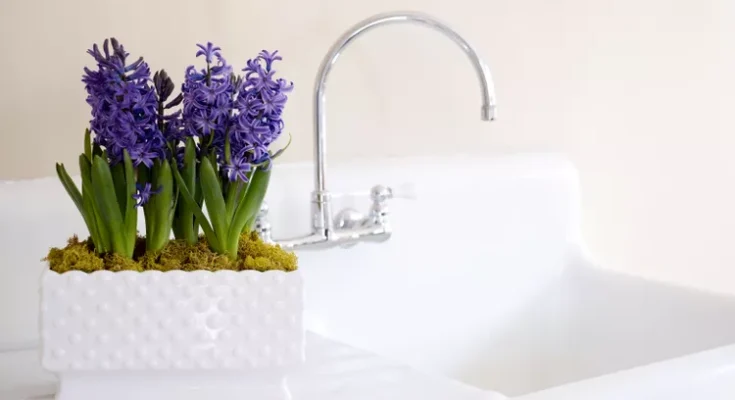Winter is coming and we’re heading indoors more often across the South. The opportunities for gardening are still around, but a little less when compared to our warm growing season. Our attention turns from summer crops of fresh vegetables and yards lush with blooming flowers to colder weather options like houseplants. Whether you love them for adding beauty to your house, cleaning the air, or helping you feel calm, houseplants are proven to benefit life inside.
:max_bytes(150000):strip_icc():format(webp)/GettyImages-1387733845-3fc6a55aec3847dbad9c00323de95cea.jpg)
Every aspiring gardener runs into a challenge at some point with their plants. If you’re looking for a reason that they might not be healthy, it could be as simple as the water you’re using. Let’s take a look at tap water and see a few reasons it could be affecting your plants and what the best choices are for water to make them thrive.
:max_bytes(150000):strip_icc():format(webp)/GettyImages-1704854171-3bd6664adbb5436a87948db765da69f9.jpg)
Hard Water Versus Soft Water
You may have heard of ‘hard’ and ‘soft’ water. Those terms are referring to the amount of calcium and magnesium minerals found in the water. On the lower part of the scale, the water is called ‘soft,’ and if the mineral count is higher, the water is considered ‘hard’.
You might notice the difference in your own home in the shower. If you feel a little slippery, chances are you have soft water. The lack of minerals just make your skin feel that way. If your shower door has buildup that just won’t come off, it’s probably due to hard water mineral deposits.
What’s Better For Houseplants?
Houseplants that are watered with soft water do much better than those that are watered with hard water, it’s that simple.
“For plants, hard water can be harmful as they can become overburdened by calcium and magnesium deposits, preventing them from imbibing other nutrients, leading to deficiencies and yellowing leaves,” said Gene Fitzgerald, senior scientist for Best Osmosis Systems, “These minerals are required by plants but can cause havoc when there are too much of them.”
Excessive minerals in tap water doesn’t just cause the plant to suffer, it harms the soil. When the minerals build up, the dirt can become compacted and be less able to absorb water. That stops roots from growing easily and inhibits the plants from pulling needed nutrients from the soil. Think about that shower door and imagine that in your plant soil. Not the best environment!
What Kind Of Water Do You Have?
If you’re still unsure about what kind of water you have, the Southeast is one of the biggest areas of soft water in the country. There are exceptions to that rule. Florida’s water is hard. The rain falls to the ground in this state and filters through limestone, picking up minerals along the way. Also, well water is usually hard, adding minerals from exposure to the soil. This is general information. The only way to truly find out where your water sits on the scale is by testing it or contacting your water provider for their test results.
Tap water in the United States also includes chlorine or chloramine to kill germs. While these are very effective to kill bugs that we don’t want in our water, they may also kill beneficial organisms in the soil that contribute to the growth and health of your houseplant. High levels of these chemicals can even damage the roots of your plants.
Choosing The Best Water For Plants
So what can you do to make sure that your inside plants thrive this winter? It might be as easy as choosing a better water.
“To keep your plants in the best condition, it’s advised you use rainwater or filtered water as those have a lower mineral count,” recommended Fitzgerald, “Above all research the specific plant you have. Some plants can tolerate hard water, but soft or moderately hard water is always best.”



